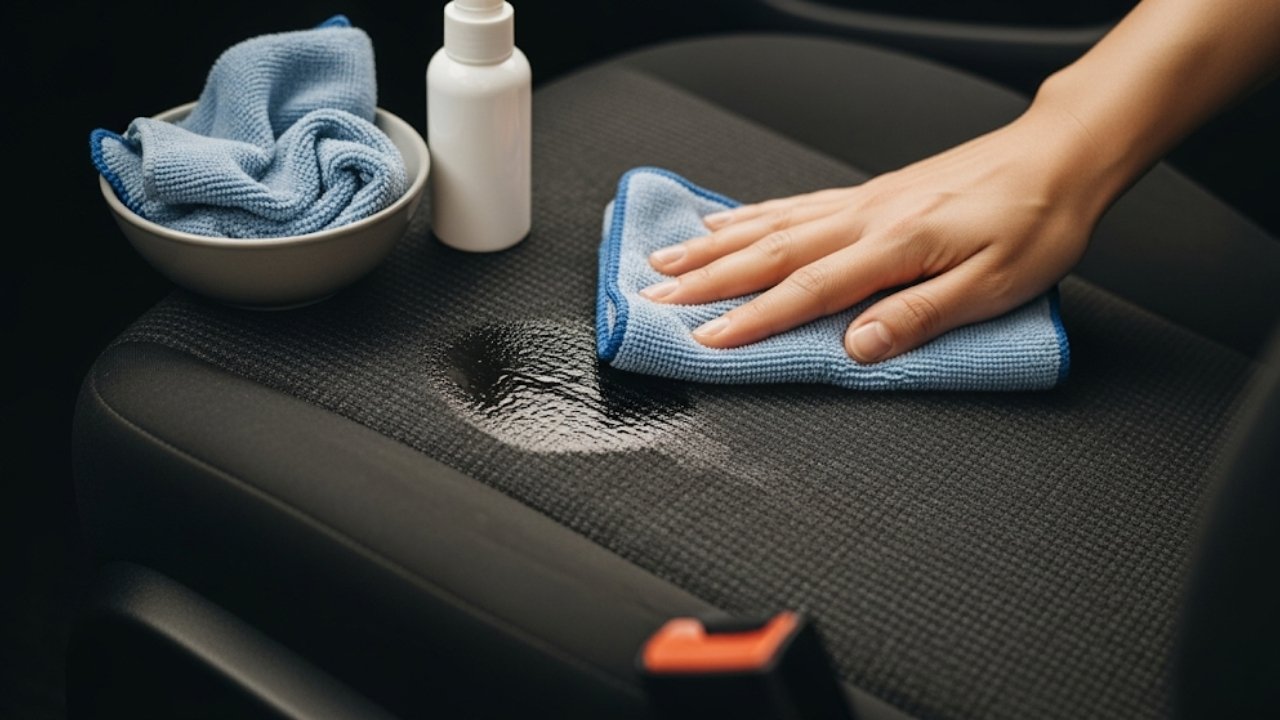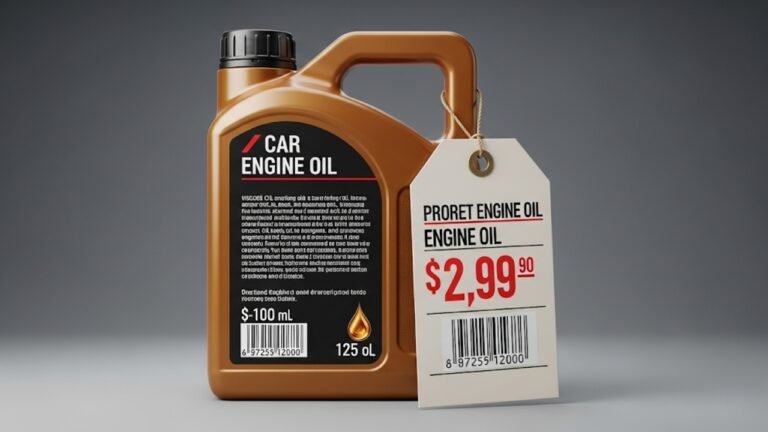How to Remove Oil Stain on Car Seat: A Friendly Guide

You’re grabbing a burger in the car. One bite in—splat! A few drops of oily sauce escape and hit your seat. That sinking feeling hits. You try wiping it fast, but the oil stain on the car seat already looks like it’s there to stay.
Don’t worry, you’re not alone.
We’ve all had moments like this—some mess, some panic, and a quick Google search later, you’re reading this article. Whether it’s engine oil, food grease, lotion, or makeup, oil stains are nasty. They soak deep, attract dirt, and are super stubborn.
But the good news? You can fix this. And you don’t need to be a detailing expert or spend hundreds at the car wash.
In this guide, I’ll walk you through how to remove oil stain on car seat, step-by-step. I’ll also throw in my personal tricks, easy household items, and explain what works (and what’s a total waste of time). Let’s roll!
Quick Glance: Cleaning Methods Based on Seat Material
| Seat Material | Best Cleaning Method | Recommended Products | Drying Time |
|---|---|---|---|
| Cloth Fabric | Baking soda + dish soap + vinegar | Dawn, Arm & Hammer | 4–6 hours |
| Leather | Cornstarch + mild soap + leather conditioner | Lexol, Chemical Guys Leather Cleaner | 2–3 hours |
| Synthetic (Vinyl) | Degreaser or vinegar + baking soda | Simple Green, White Vinegar | 1–2 hours |
| Suede or Alcantara | Isopropyl alcohol + microfiber + gentle brushing | 70% Alcohol, Suede Brush | 6–8 hours |
Why Are Oil Stains So Difficult to Remove?

It’s also sneaky. You might clean it once and think it’s gone—but days later, you’ll see that darker patch again. That’s because oil molecules cling to fibers unless they’re broken down properly.
Most people make it worse by scrubbing aggressively or using the wrong cleaner. I made that mistake once—scrubbed the spot with hot water and soap. Result? It spread, and my cloth seat looked worse.
The key is using absorbent materials and non-aggressive solutions. Let the cleaner lift the oil, not just push it around.
Trust me, once you understand how oil behaves, getting rid of it becomes way easier.
Act Fast! First-Aid Tips for Fresh Oil Spills
Timing is everything. A fresh oil stain on car seat is like wet paint—you can catch it early and clean it up almost entirely. But if it dries in, it gets harder.
So if you just spilled something oily:
-
Blot, don’t rub. Use a paper towel or napkin to press and lift the oil.
-
Avoid water immediately. Water and oil don’t mix. It just makes it slippery.
-
Use baby powder or baking soda. Sprinkle a generous amount right on the spot. Let it sit for 15–30 minutes—it will soak up the oil.
-
Vacuum it off gently. Don’t use a brush yet.
This method has saved me more times than I can count—especially during road trips or when I had my kid spill fries and dip on the back seat!
How to Remove Oil Stain on Cloth Car Seats
Cloth seats are the most common and—honestly—the most vulnerable. They soak up everything. But here’s a method that actually works.
What You’ll Need:
-
Baking soda or cornstarch
-
Dish soap (Dawn works great)
-
White vinegar
-
Warm water
-
A soft brush
-
Microfiber towels
Step-by-Step:
-
Apply baking soda: Sprinkle it over the stain, wait 20–30 minutes.
-
Vacuum it off. Be gentle but thorough.
-
Mix a cleaning solution: Use 1 tbsp dish soap, 2 tbsp vinegar, and 1 cup warm water.
-
Blot the stain. Dip a cloth into the solution and press on the stain—don’t scrub.
-
Brush lightly. Use a toothbrush or soft bristle brush in circular motions.
-
Blot again. Use a clean, dry microfiber cloth.
-
Let it air dry. Open car windows or doors for airflow.
I once spilled a bottle of facial oil on my passenger seat. Using this exact method, I got rid of 90% of the stain in one round, and the rest after a repeat session the next day. It works!
Leather Seats: Delicate But Salvageable
Leather may seem easier since it doesn’t absorb as fast, but it needs care. If you’re not gentle, you’ll strip its finish or leave blotchy patches.
Things You’ll Need:
-
Cornstarch or talcum powder
-
Mild dish soap
-
Warm water
-
Leather conditioner
-
Soft cloth
Steps to Follow:
-
Dust with cornstarch. Let it absorb oil for 30 minutes to 1 hour.
-
Wipe with damp cloth. Mix soap with warm water, dip a microfiber cloth in it, and wipe the stain.
-
Avoid soaking the leather. Moisture damage is real.
-
Buff gently. Use a dry cloth to remove residue.
-
Apply conditioner. Once dry, restore the leather’s softness.
A friend of mine dropped a piece of fried chicken on her cream-colored leather seat. She was horrified. This method completely fixed it in a day.
Removing Old or Set-In Oil Stains
Sometimes, life happens. You notice a greasy oil stain on your car seat from weeks ago. Don’t lose hope. It’s harder, yes—but not impossible.
Here’s what I’ve learned over time:
-
Use a degreaser: Something like Simple Green or even diluted dish soap.
-
Let it sit: Soak the spot for 10–15 minutes to break the bond.
-
Gently agitate: Use a brush and circular motions—but don’t be rough.
-
Blot and rinse: Use clean water and dry towels.
-
Repeat if needed.
One time I bought a used car, and the back seat had this weird, round oil spot. After three rounds of the degreaser + blot method, it was gone.
Persistence is key. It’s not magic, it’s chemistry—and a little elbow grease.
Suede or Alcantara Car Seats: Clean Gently, Clean Right
These materials are soft, stylish, and luxurious—but they’re also super sensitive. Rubbing or scrubbing the wrong way can ruin the texture forever. So if you’ve got a suede or Alcantara oil stain, take a deep breath—we’ll go slowly.
What You’ll Need:
-
70% isopropyl alcohol (not water-based cleaners!)
-
A suede brush or toothbrush
-
Microfiber cloths
How to Clean:
-
Dab with a dry cloth first. Don’t press too hard—just lift any excess oil.
-
Pour alcohol onto a microfiber cloth. Not too much, just dampen it.
-
Blot the stained area. Use quick dabbing motions. The alcohol helps break the oil without soaking the fabric.
-
Brush lightly. Once the area dries, use a suede brush to restore the nap (the soft texture).
-
Repeat if needed.
Alcantara is common in sports cars and high-end interiors, and a friend once told me he spilled hand lotion on his. Using this exact method saved his seat—and probably his resale value too!
Natural & Eco-Friendly Options for the Conscious Car Owner
If you’re someone who prefers natural remedies (or you’re just out of chemical cleaners), you can still tackle oil stains effectively.
Here are some eco-safe methods:
✅ Vinegar + Baking Soda:
-
Mix equal parts white vinegar and water.
-
Spray it on the stained area.
-
Sprinkle baking soda on top.
-
Wait 15 minutes, blot, and vacuum.
✅ Lemon Juice + Cornstarch:
-
Good for light-colored seats.
-
Lemon helps break down oil, cornstarch absorbs it.
-
Let sit for 30 minutes and wipe clean.
✅ Castile Soap:
-
Very mild and natural.
-
Works well for both fabric and vinyl seats when diluted.
These options aren’t just safe—they smell better too! I’ve used the vinegar + baking soda combo for old fry grease spots, and the seat came out smelling fresh and clean.
Avoid These Common Mistakes (I Learned the Hard Way)
Even with the best intentions, it’s easy to make mistakes that make the oil stain on car seat worse. Here’s what NOT to do:
-
❌ Don’t rub hard. You’ll just spread the oil further into the fibers.
-
❌ Avoid hot water. It sets the stain instead of lifting it.
-
❌ Skip abrasive brushes. They can damage upholstery—especially leather or suede.
-
❌ Don’t use bleach or harsh chemicals. These can fade or discolor your seats.
-
❌ Never leave wet seats. Always let them air dry fully to prevent mildew.
I once tried using laundry detergent and a sponge on a leather seat—bad idea. It dried out the leather and left a weird discoloration. Now, I always test on a small spot first.
Prevention Is Easier Than Cure: Keep Seats Oil-Free
Once you’ve dealt with a nasty stain, you never want to go through it again. Here’s how I prevent stains now:
-
✅ Seat covers. Especially if you have kids or eat in the car. Get washable ones!
-
✅ Keep baby wipes in the glove box. Great for fast action on spills.
-
✅ Use a leather or fabric protector spray. Adds a layer that resists stains.
-
✅ Regular vacuuming. Oil attracts dust—keep it clean.
-
✅ Avoid greasy food inside the car. I know, easier said than done.
Also, consider a mini spill kit. Mine has: a microfiber towel, a tiny bottle of vinegar-water mix, and a pack of baking soda. It’s come in handy more than once on long drives.
FAQs: Your Oil Stain Questions Answered
Q1: Can I use WD-40 to remove oil stains from car seats?
A: While WD-40 can break down oil, it’s also an oil-based product. Use with caution. It may make things worse unless you rinse it out thoroughly.
Q2: Will steam cleaning remove oil from car seats?
A: Steam can help loosen set-in stains, but it’s not great for oil alone. Use steam after absorbing the oil with powder and cleaner.
Q3: Is shampoo safe for cleaning oil stains?
A: Only mild shampoo (like baby shampoo) and only for cloth seats. It won’t be very effective against heavy oil.
Q4: How long should I let baking soda sit on the stain?
A: At least 20–30 minutes. For older stains, you can leave it overnight.
Q5: Can oil stains damage leather permanently?
A: If left untreated, yes. Oil can break down leather over time. Clean it quickly and condition afterward.
Q6: What’s the best product for old oil stains?
A: Simple Green, Folex Carpet Spot Remover, or a vinegar + dish soap solution. Always test first.
Q7: Should I call a professional for tough stains?
A: If it’s an expensive car, luxury interior, or a huge stain—yes. Pros have industrial tools that go deeper.
Q8: Will repeated cleaning fade my seat color?
A: If you use harsh chemicals or scrub too much, it might. Use soft cloths and gentle motion.
Final Thoughts: A Clean Seat is a Happy Ride
Oil stains are frustrating. They sneak up when you least expect it and feel impossible to clean. But the truth is—with the right approach—you can remove oil stain on car seat without spending a fortune or losing your mind.
Just remember to act fast, use the right tools, and be gentle with your seats. Every mess is fixable if you stay calm and patient.
Personally, every time I clean a stain, I feel like I’ve regained control of my space. It’s not just about cleaning—it’s about caring for your car, the memories inside it, and the people who ride with you.
Next time something greasy hits your seat, smile and say, “I’ve got this.”
Because now—you really do.






